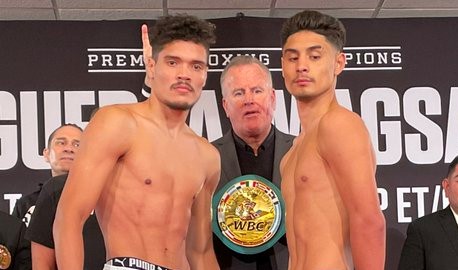by Bryanna Fissori
When watching a boxing match, it is easy to focus on a flurry of fists and rapid head and shoulder movement while fighters throw and block strikes. Most of this action is seemingly happening above the waist, while in reality, the boxer’s legs are in constant motion, powering each movement.
Generating force from the Ground Up
Punching power is generated from the ground up, making it crucial that boxers don’t skip leg day. Rarely does a competitor stand stationary in the ring. Constantly attacking and defending requires a lot of movement, which means legs don’t get much of a break until the round is over. While upper body strength is undoubtedly important, the majority of punching power is generated from the legs.
A boxer’s legs generate power from the ground up, transferring it through your core, shoulders, arms and into the fists. A 2013 study in the Journal of Strength and Conditioning Research found that experienced boxers use their legs to drive 38.6 percent of the force in their punches. Intermediate level boxers legs provide 32.2 percent of their power, while novices use only 16.5 percent. It is easy to see that reaching the highest level of completion requires optimal leg strength and power.
Weight classes are an important part of competitive boxing, but less crucial for those boxing for fitness, self-defense or technique. Heavy lifting is not necessarily the most effective way to build leg muscles for boxing, though lifting can play an important part in building functional strength and guarding against injury.
Leg Day for Boxers
There are countless techniques to build leg strength and speed. Balance is important. These are a few options you may want to consider adding to your strength and conditioning routine for boxing.
Deadlifts – There is no reason to try and kill yourself to build large or bulky leg muscles that may slow you down. Deadlifts are important because strengthening and lengthening your hamstrings has the added benefit of protecting the muscles around the knee. This could lessen the probability of injuries to the knees such as joint tears.
Squats – Squats can be done with or without weights. Again, lifting heavy is not necessarily the most productive option. Squats can also be done in a boxing fight stance, though it is a good idea to switch stances evenly. If squats are painful because of existing knee issues, it is ok to flare the back knee out a little and keep the back heel off the ground as if ducking a punch.
Jump Rope – A boxer’s movement is continual. Most people associate jump rope with speed and agility, which is correct. But jumping rope also helps to strengthen calf muscles and build leg endurance. A boxer should not move around the ring with their weight on their heels and jumping rope forces weight onto the front of the foot.
Plyometrics – Plyometrics or plyos are exercises that require muscles to exert maximum force in short intervals, with the goal of increasing power. Some examples include skier lunges, single-leg hops, or squat jumps.



















AffiliateLabz
02/24/2020 at 2:49 am
Great content! Super high-quality! Keep it up! 🙂
MarlusalL
07/19/2024 at 8:27 am
buy cialis online using paypal com that the truck scoured the Long Island City section of Queens on Wednesday and will again on Thursday